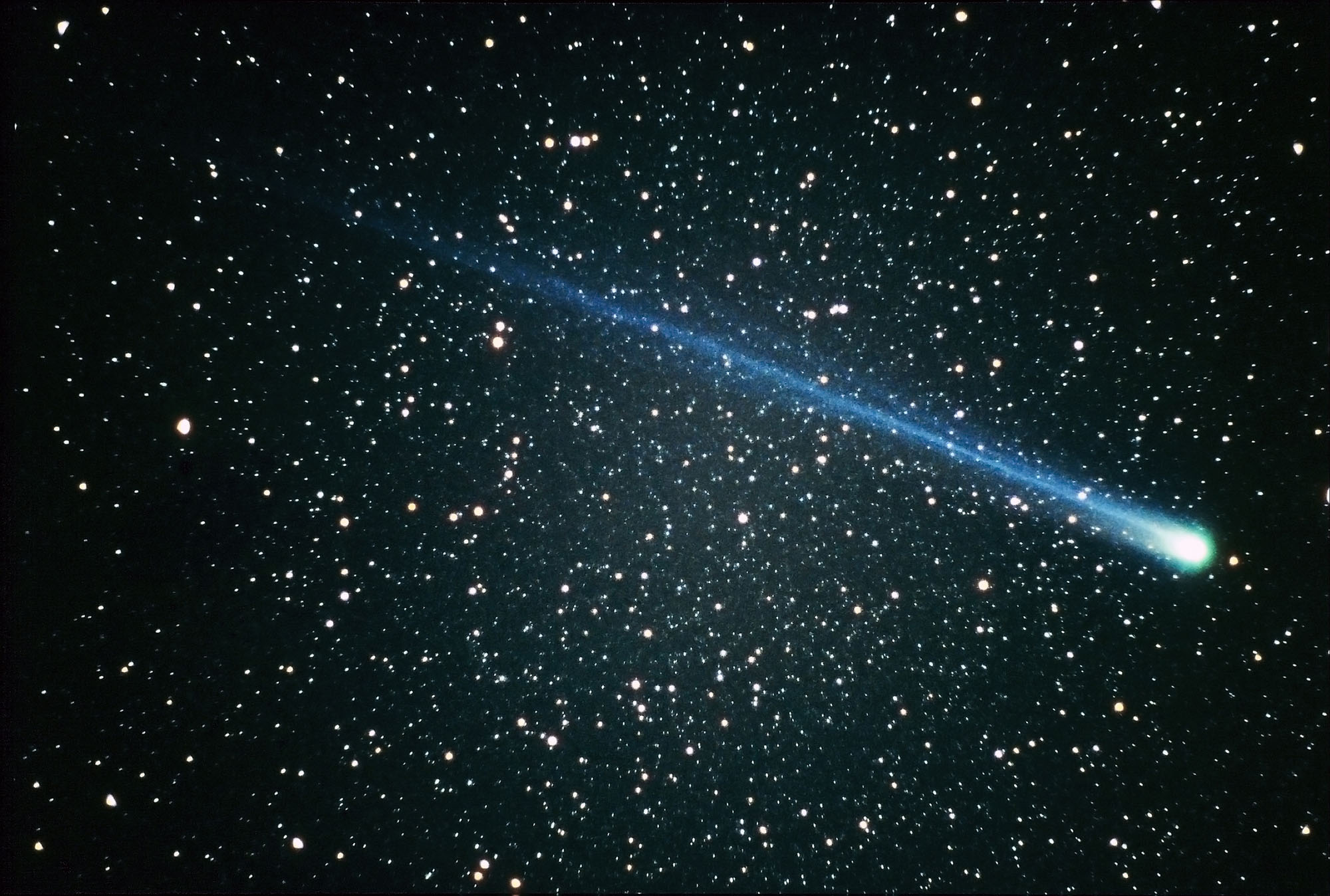Comet Hyakutake, the great comet of 1996, is shining in its full splendor in the Big Dipper constellation over Northern Germany. The comet was moving extremely fast and was only visible for about a week in February 1996. Because of the persistent bad weather during this time only a few people have been able to admire Hyakutake. Only the great endurance of the nightly odysseys across northern Germany in search of gaps in the fog and the fast setup of the astronomy star-tracking instruments made this ten-minute exposure image possible.
-
Comet Hyakutake in 1996

